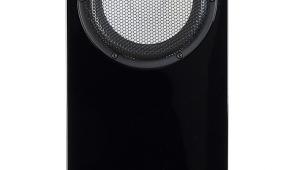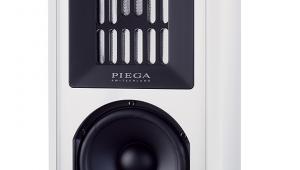Teufel Ultima 40 (£349)
 It’s not so long ago that I asked, rhetorically, in these pages how JBL could sell a four-driver, three-way floorstander (the Studio 190) for a mere £480 a pair [HFN May ’11]. Well, JBL eat your heart out: the Teufel Ultima 40 is also a four-driver, three-way floorstander and it sells for just £349 a pair, plus a delivery charge of £20. During the review period, in fact, it was on special offer for even less: a barely credible £299 at one point.
It’s not so long ago that I asked, rhetorically, in these pages how JBL could sell a four-driver, three-way floorstander (the Studio 190) for a mere £480 a pair [HFN May ’11]. Well, JBL eat your heart out: the Teufel Ultima 40 is also a four-driver, three-way floorstander and it sells for just £349 a pair, plus a delivery charge of £20. During the review period, in fact, it was on special offer for even less: a barely credible £299 at one point.
How does Teufel do it? A significant part of the answer is that it sells direct to the customer, cutting out the middleman. So don’t go looking for Teufel products in hi-fi dealers, you won’t find them. What’s good news for the asking price is, of course, bad news in that you can’t try before you buy, but Teufel counters this by offering purchasers an eight-week money-back trial period. It also gives an extraordinary 12-year guarantee.
That’s only part of the story of the low cost, though. While Teufel trades on German design excellence it’s clear that these speakers are made down to a price. The lower part of the cabinet appears very resonant when knuckle-rapped and one of the review pair arrived with an internal rattle that proved, on disassembly of the speaker, to be due to the crossover board’s two mounting screws not having been tightened fully on the production line – they were far too stiff to have loosened in transit. Also, no carpet spikes are supplied, and there’s no provision to fit any – the base has feet suitable for hard floors.
ODD TONAL BALANCE
Evidence of the Ultima 40’s budgetary constraints is also clear in the lab report. Not to mince words, its on-axis frequency response is like the proverbial dog’s hind leg, principally due to the ear-level midrange driver having an output around 5dB shy of the tweeter’s.
It is essential, therefore, that you listen to the Ultima 40 off-axis, otherwise its treble is searing and its midrange recessed. Firing a stereo pair straight down the room, rather than angling them towards the listening seat, helps counter this but an odd tonal balance persists.
On the wonderfully spacious Decca Scheherazade this manifested itself as a curiously hollow sound to the acoustic. The stereo image was large and the orchestral fortes free-flowing but everything was overlaid with a distinct coloration.
Unsurprisingly, this character was carried over to the other test pieces. The opening percussion on ‘Honky Tonk Women’ was crisp enough but the guitar and vocals weren’t projected with the required verve. On Grace Jones’s ‘Well Well Well’ this became a lack of rhythmical shove, with the added problem that the bass – although reasonably well extended – sounded detached and a bit lacking in speed and control.
‘Poetspeak’ fared better but sounded a little leaden, while the piano in the Ravel sonata was bordering on jangly and the violin tone too thin.
Originally published in the December 2011 issue

























































